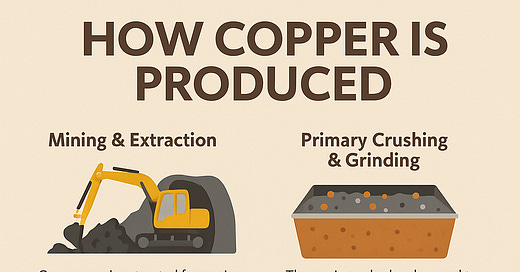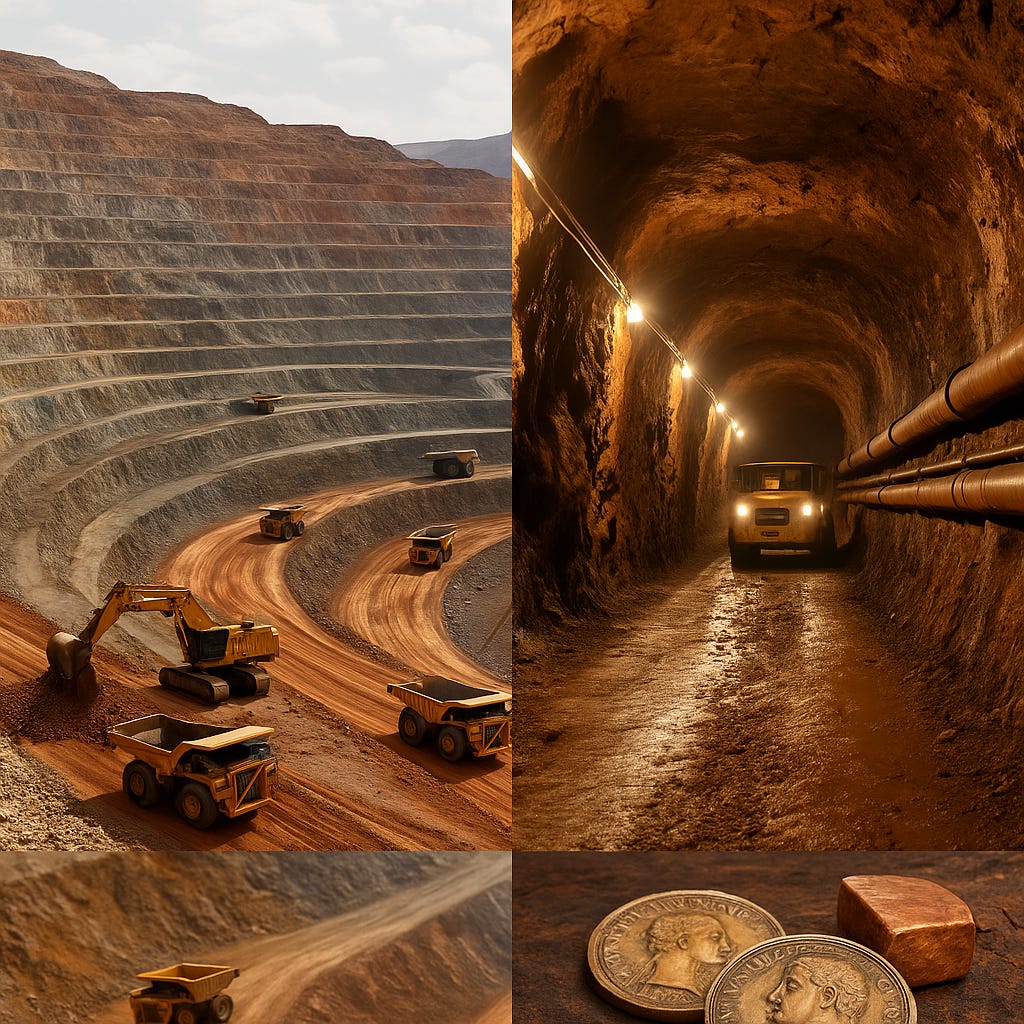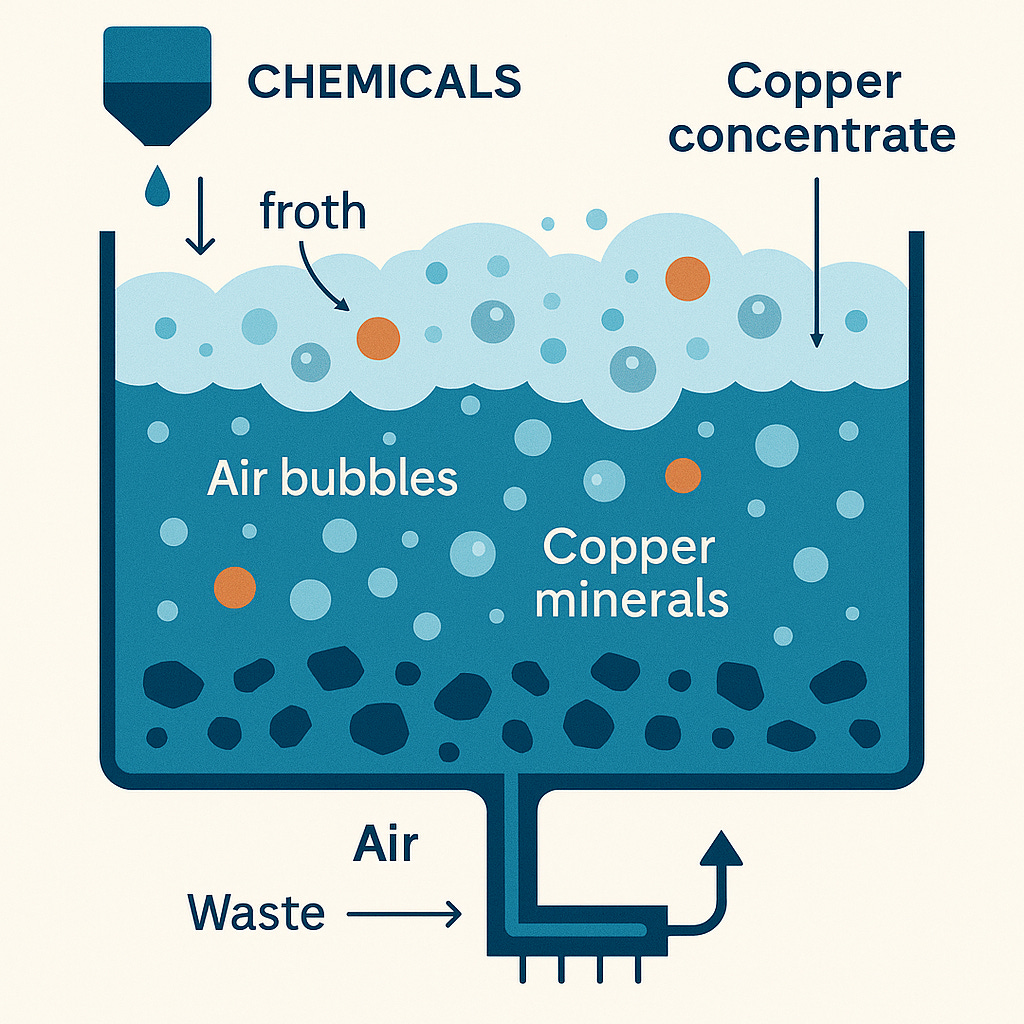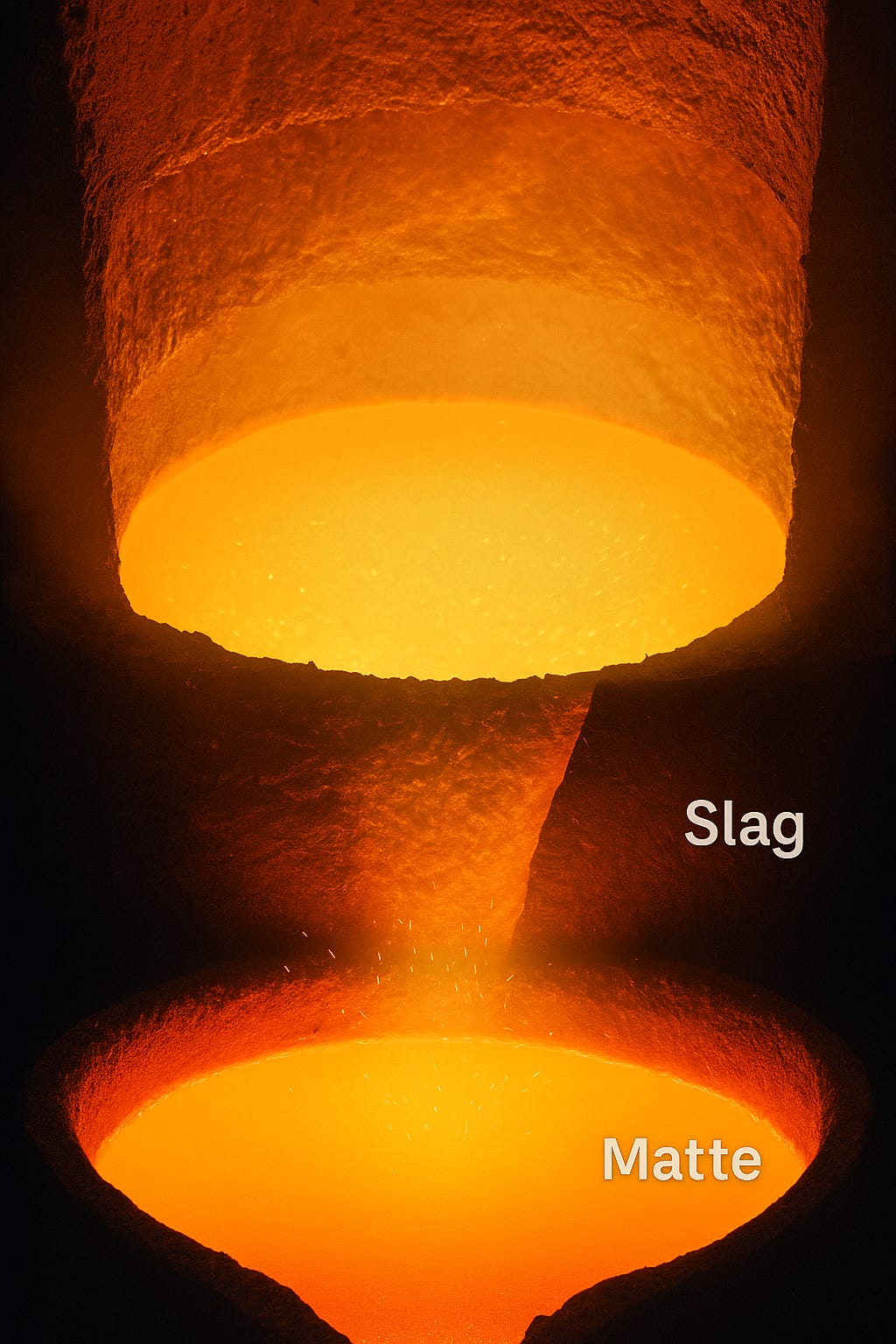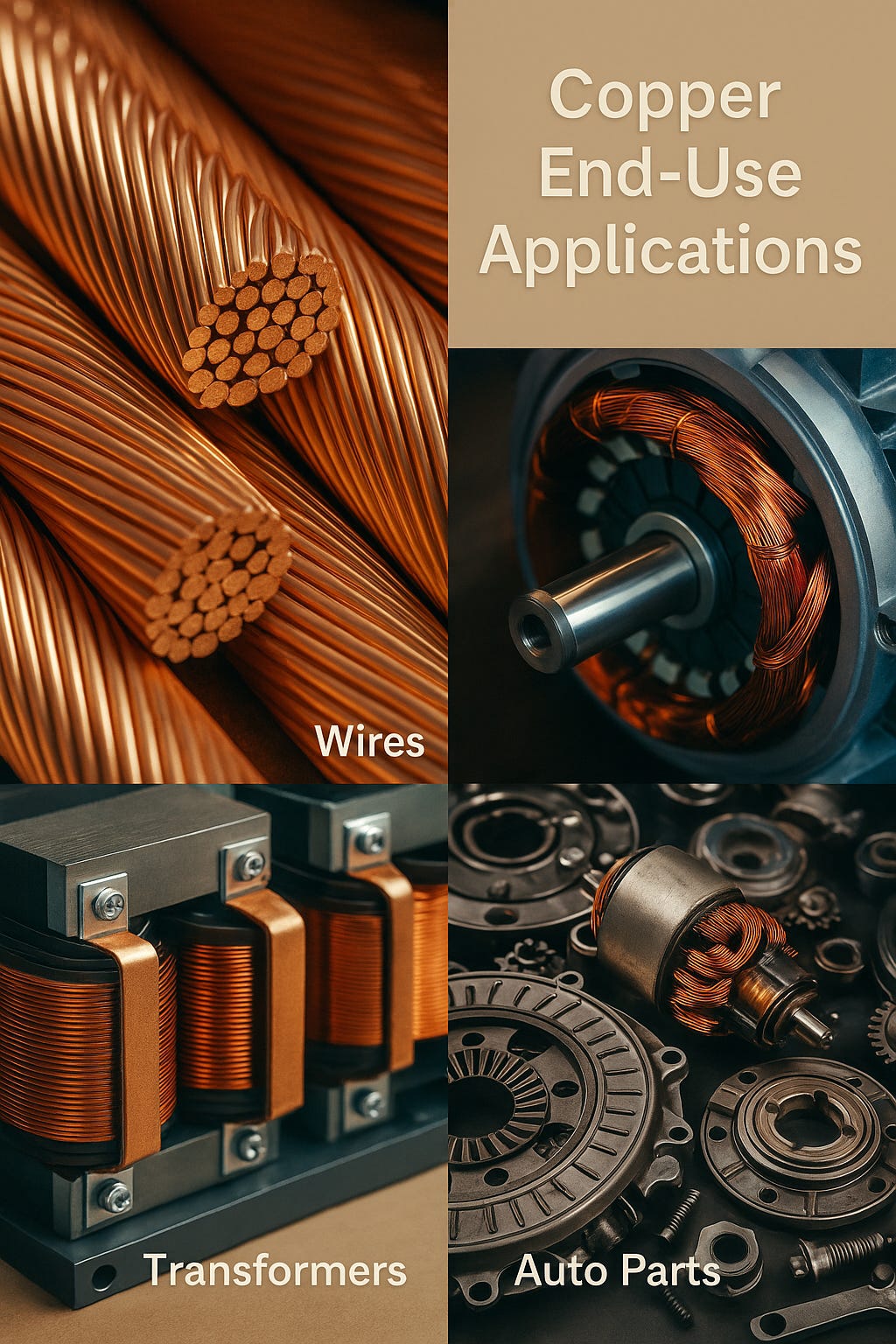"How Raw Copper Ore Becomes Industrial-Grade Copper: Step-by-Step Breakdown"
Day 78 of my 100-day journey into India's power sector.
The previous few posts have been about copper, its applications, role in the green energy transition and its history. In this post and the following, I will be covering the extraction methods of copper. This post will cover the primary extraction process from copper ore and the next post will cover the secondary extraction process from copper scrap.
From rocks buried deep underground to the wires powering your devices — the journey of copper is nothing short of fascinating. Today, let’s break down the complete process of copper extraction and transformation, from the raw ore all the way to finished industrial products.
1. Mining & Extraction
The journey starts at the mine. Raw copper ore is extracted from the earth via:
Open-pit mining– Used when ore is near the surface. Large earth-moving equipment scoops out the ore, which contains only a small percentage of copper.
Underground mining – used for deeper deposits, accessed through tunnels.
2. Primary Crushing & Grinding
Once the ore is extracted:
It’s crushed into smaller chunks using jaw crushers and grinders.
The goal? Reduce ore size to make the next steps efficient.
Think of it like breaking big rocks into gravel.
3. Concentration (Flotation Process)
At this stage, the aim is to separate copper minerals from the unwanted material (called gangue). This is done through froth flotation:
Chemicals are added to create bubbles.
Copper minerals stick to the bubbles and rise to the top.
The resulting concentrate contains 25–35% copper (plus traces of iron, sulphur, and sometimes gold or silver).
4. Smelting
The copper concentrate is heated in a furnace. Due to the high temperature, It melts into two layers:
1) Molten Copper Matte layer– Rich in copper sulphide.
2) Overlaying Slag layer– Impurities.
The matte is further processed to produce blister copper — about 98–99% pure.
5. Refining
Now we go for ultra-pure copper. Two methods are used:
Electrolytic Refining:
Impure copper is made the anode.
Pure copper gets deposited at the cathode.
Result: Copper with >99.9% purity.
Fire Refining: Uses oxidation/reduction reactions to remove impurities from blister copper.
6. Casting
The refined copper is then melted and poured into moulds, cooled and solidified into:
1) Cathodes
2) Rods
3) Billets
4) Ingots
These are the building blocks of industrial copper products.
7. Processing into Downstream Products
Finally, the cast copper is converted into:
Tubes
Wires
Rolled products
These are used in everything from:
Motors & pumps
Transformers & electronic components
Automobiles & electrical systems
Why This Matters
Copper isn’t just another metal. It’s the backbone of:
The green energy transition
Electrification
Global infrastructure
Understanding how it goes from ore to application gives insight into supply chains, commodity markets, and even geopolitical dynamics.
